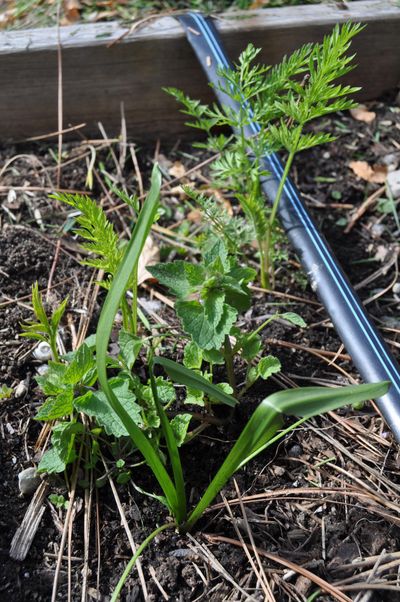Gardening: It’s time to plant spring vegetables

Early-season vegetables need the cooler temperatures of spring and early fall to grow well. Once it starts getting hot the middle to end of June, they begin to fade away. Many of them are also sensitive to day length around the summer solstice (June 21) and will begin flowering or bolting to produce seed.
Cool-season vegetables include carrots, potatoes, spinach, peas, lettuce, cabbage family vegetables (kale, cabbage, broccoli, cauliflower, Brussels sprouts), cilantro, kohlrabi, beet, radish, turnip, onions and leeks, to name the main ones. Seed-packet information usually notes these as crops that can be planted as soon as the soil can be worked. Given that our soil is finally drying out, we can start planting some seedlings in the next couple of weeks.
To get a head start on your harvest, consider purchasing seedlings of the cabbage family, spinach and lettuce for an early crop and then plant seeds alongside them to extend your harvest further into the early summer and beyond.
Traditionally the Irish planted their potatoes on Good Friday, which is April 14 this year. Set either whole small potatoes or cut sections with strong eyes in a shallow, 6-inch-deep trench. Cover with 6 inches of soil. Allow the potatoes to send up leaves about a foot and then draw soil up around the leaves so that just the tips are showing. Repeat this after the plants put on another foot of growth. The potatoes will form between the seed piece and the soil surface. Potato leaves may turn black in a light frost but the plants usually recover. Harvest the potatoes when the vines turn yellow.
Carrots can be tricky to get started because they can take two to three weeks to germinate. In that amount of time weeds can take over the carrot patch with a vengeance. Carrot seeds are tiny and need to be planted nearly at the soil surface. This can be a hassle, so I have switched to using pelleted carrot seed. The seed is rolled in a clay coat that makes it much easier to handle and space out, which reduces thinning later. I usually order pelleted seed from places like Johnny’s Seed or Territorial Seed.
Create a level seed bed and then cover it with 2 inches of potting soil, which creates a weed barrier. Scatter the seeds on the soil surface and then very lightly cover them with soil and tamp the soil surface. Gently water the planting. Some people cover the bed with a piece of plywood or a tarp to hold in moisture and deprive the weeds of light. Once you see the grasslike carrot shoots, remove the cover. Keep the bed moist until the plants emerge.
For onions, buy onion sets or, in the case of Walla Walla sweet onions, plants. Plant them about 2 inches deep. Sets are simply small onions. Once the green shoots appear, the bed needs to be mulched with 2 inches of mulch for weed and moisture control.